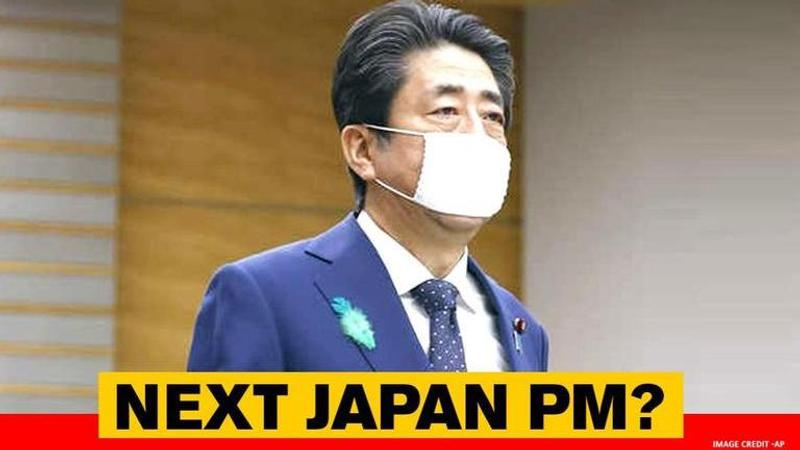Published 14:25 IST, August 28th 2020
Japan's longest-serving PM Shizo Abe resigns; here's who can take over the top post
After achieving a historic feat of being longest-serving Japan PM, on Friday, Shinzo Abe resigned due to health issues, but, remained mum about his successor

On August 28, the longest-serving Japanese Prime Minister Shinzo Abe resigned due to health issues. This came after Shinzo Abe's visit to hospitals increased in the last two weeks giving rise to a flurry of speculations about his declining health. Abe visited Keio University Hospital in Tokyo for the second time in a week and spent more than seven hours. However, officials had maintained that it was his regular checkups. Shinzo Abe has the longest uninterrupted stint in office as PM in Japanese history. As he resigned on Friday, he issued an apology to the people of Japan but remained tight-lipped on questions about his successor.
On Friday, as the longest-serving Japan's PM Shinzo Abe resigns, here's all you need to know:
Abe's health
Reports have stated that be suffers from colitis, a non-curable inflammatory bowel disease that causes stomach pain, diarrhea and extreme fatigue. He was forced to resign during his first stint as Prime Minister from 2006 to 2007 due to the disease but again became Prime Minister in 2012. Even before the recent hospital visits, there had been reports claiming that 65-year old Abe was vomiting blood, and questions were raised over his limited public appearances and decision to avoid holding a press conference to address criticism of his handling of the coronavirus. Finally, it was announced by Abe in his first press conference since June 18 that he has is resigning.
What happens now that he has resigned?
Japan's longest-serving Prime Minister Shinzo Abe's tenure will end in September 2021. As he resigns, the first scenario is that a minister of state whom he has designated in advance will take over, as per Article 9 of Japan’s cabinet law. However, this law sets no limit on how long the acting prime minister can stay in office. The second scenario is that an election will take place within the Liberal Democratic Party (LDP) to replace him as the chief, followed by a vote in parliament to elect a new prime minister - who would only hold the post till Abe's tenure gets over in 2021.
Who are in line to succeed Shinzo Abe?
1. Taro Aso: Deputy PM Taro Aso also holds the post of finance minister and is considered an Abe loyalist as well as just like Abe - he is Japan's longest-serving finance minister and deputy PM. He is 79-years old and political analysts are of opinion that he will not be given the charge for caretaker PM. However, he has had a brief stint at the office in 2008-2009, after party voted him to be its president and thus country's Prime Minister. This can also work against him as LDP suffered its historic defeat in 2008 under his leadership position paving way for Democratic Party (DPJ) for the next three-years.
2. Yoshihide Suga: The chief cabinet secretary of Abe, he is believed to have pushed the Prime Minister to power in 2012. Abe's trusted lieutenant, he was a top government spokesperson and is a top choice for the next PM. However, he was in the midst of scandals and two Cabinet ministers close to him were toppled last October.
3. Shigeru Ishiba: Former Defense Minister and an Abe critic, Ishiba, 63, regularly tops voters choice for bring the next prime minister, but he is less popular with the party’s lawmakers. He had defeated Abe in the first round of a party presidential election in 2012, but lost in the second round of the vote. In a 2018 party leadership poll, Ishiba lost heavily to Abe.
4. Taro Kono: Defense Minister Taro Kono who is 56-year old has backed Abe in his key decisions. including a stern stance in a feud with South Korea over wartime history. He has also served as a foreign minister and minister for administrative reform.
5. Shinjiro Koizumi: The son of former Prime Minister Junichiro Koizumi, 39-year-old Shinjiro Koizumi is the environment minister and is floated as a future leader of the party but not an immediate successor.
6. Fumio Kishida: This 63-year old former foreign minister (2012 to 2017), has been widely seen as Abe’s preferred successor. However, this low-key lawmaker from Hiroshima Prefecture has not been popular among voters.
How is Japan's PM elected?
The national parliament of Japan is called the Diet. The Diet is divided into an upper house (the House of Councillors) and a lower house (the House of Representatives). The House of Representatives elects a prime minister from among themselves by majority vote thus, the prime minister is usually a leader of the majority party. The House of Representatives in Japan has 465 members, who are elected for a four-year term. Currently, the lower house has 284 members of LDP and 29 of ally-Komeito. Thus, it becomes crucial to see who will be selected as LDP chief.
Updated 14:27 IST, August 28th 2020




